Notes
The Japan Quake Anniversary and the "Ownership" of Commemoration
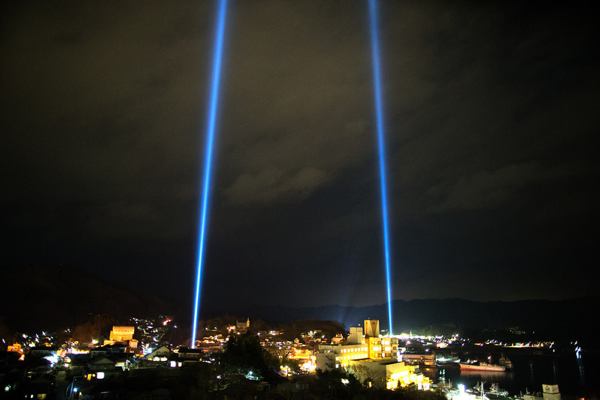
Looking at the photos from the second anniversary of the Japanese quake and tsunami yesterday, I couldn’t help think about the visual politics of commemoration. What jumped out at me is how iconic this visual territory has become and the extent (or, even the requirement) that the most notable identifiers be indigenous.
The photo above is just one example of the difference. Although both were prominently displayed in the media coverage of the commemoration yesterday, they seem ambiguous at best as Japanese disaster markers. Rather, the beams over Kesennuma are more reminiscent of the temporary memorial, “The Towers of Light,” installed in New York to re-imagine the World Trade towers. (Search results for “towers of light.”)
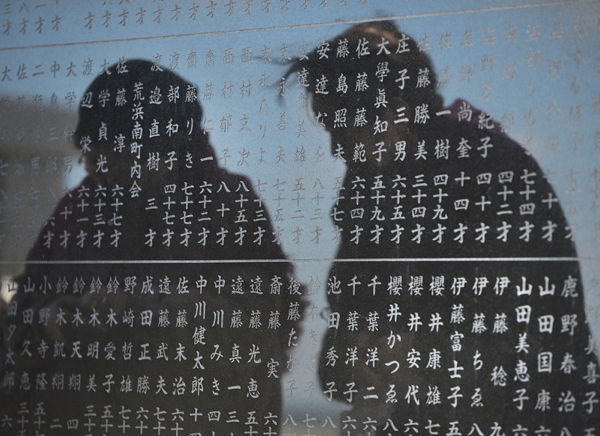
Same for this memorial in Sendai which seems reflective of the Vietnam Memorial.
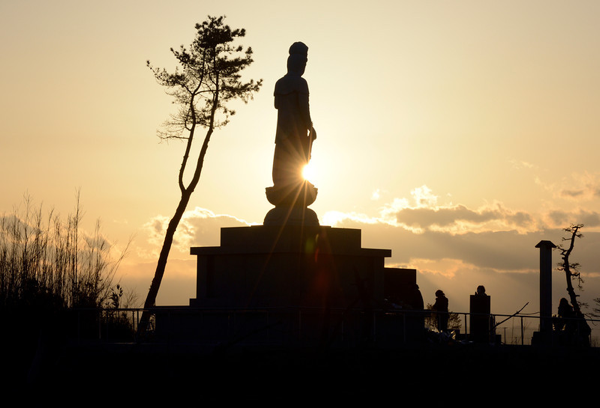
Of course, there are symbols of the Japanese disaster that are poignant as reflections of the culture. That attribute is certainly evident in the Buddhist statue to honor tsunami victims in Sendai. (The use of the sunset for embellishment doesn’t hurt either.)
But what seems to really capture the imagination (at least, as far as the newswire goes) are those shrines/memorials/monuments intrinsic as much to the event as to the culture. Along those lines, there is the “miracle pine tree” in Rikuzentakata. (Read the inspiring caption below.)
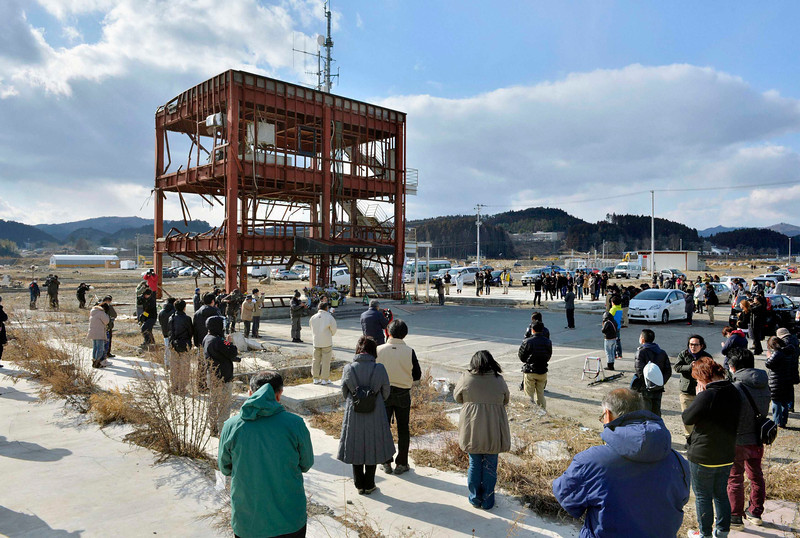
There is also the skeleton of the ironically mandated “Disaster Prevention Office” in Minamisanriku.
But the symbol that seemed to stand out as strongly as any other yesterday was the ghost ship in Kesennuma. Part of the reason, and it’s a compelling one, is familiarity. the Kyotoku Maru a singular metaphor most of us recognize from two years ago for a country chaotically run aground.
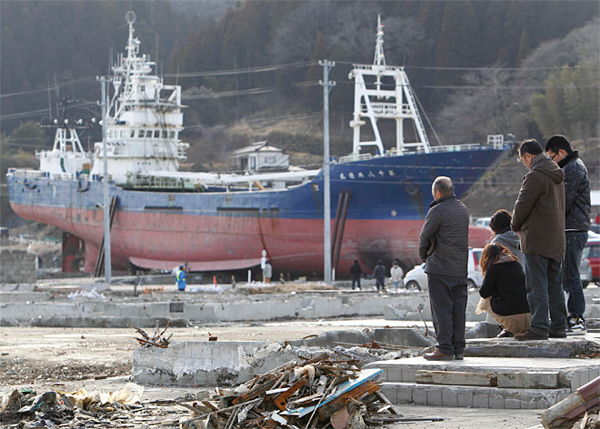
Yesterday
Then
(photo 1: Athit Perawongmetha/Getty Images caption: Kesennuma city is seen during a lightshow on March 11, 2013 in Kesennuma, Japan. Japan is commemorating the second anniversary of the 2011 Magnitude 9.0 earthquake and subsequent tsunami that claimed more than 18,000 lives. photo 2: TORU YAMANAKA/AFP/Getty Images caption: Two elderly women are reflected on a monument on which names of tsunami victim from the district are carved in Arahama district in Sendai, Miyagi Prefecture, on March 11, 2013. Japan on March 11 marked the second anniversary of a ferocious tsunami that claimed nearly 19,000 lives and sparked the worst nuclear accident in a generation.. photo 3: AP Photo/Kyodo News caption: An artificially-restored “miracle pine tree,” that survived the March 11, 2011 tsunami, is silhouetted against the rising sun in Rikuzentakata, Iwate prefecture, Japan, Monday, March 11, 2013. Japan marked the second anniversary of its earthquake, tsunami and nuclear catastrophe, that killed nearly 19, 000 people in areas along Japan’s northeastern coast. The 27-meter (88-foot and 7-inch)-tall tree, a single survivor among 70,000 trees in a forest along the coast, has just been restored in a project to preserve it. photo 4: Toru YAMANAKA/AFP/Getty Images caption: A Buddhist statue recently built in honor of tsunami victims is silhouetted at sunset on the seashore in Arahama district in Sendai, Miyagi Prefecture on March 11, 2013 on the second anniversary of the March 11, 2011 earthquake and tsunami disaster. Japan on March 11 marked the second anniversary of a ferocious tsunami that claimed nearly 19,000 lives and sparked the worst nuclear accident in a generation. photo 5: REUTERS/Kyodo caption: People observe a moment of silence during a rally at 2:46 p.m. (0546 GMT), the time when the magnitude 9.0 earthquake struck off Japan’s coast in 2011, near a tsunami-devastated disaster prevention office building in Minamisanriku town, Miyagi prefecture, March 11, 2013 in this picture provided by Kyodo. Japan honoured the victims of its worst disaster since World War Two on Monday: the March 11, 2011 earthquake, tsunami and nuclear crisis that killed almost 19,000 people and stranded 315,000 evacuees, including refugees who fled radiation from the devastated Fukushima atomic plant..photo 6: AP. caption: The Kikuta family observe a moment of silence at a site where their house once stood in Kesennuma, Iwate. photo 7: Issei Kato/Reuters caption: Seventy-year-old Takeshi Yokoyama (L) and his 64-year-old wife Umeko carry boxes of food in front of the Kyotoku-maru fishing trawler in Kesennuma, Miyagi Prefecture, nearly two weeks after the area was devastated by an earthquake and tsunami, March 22, 2011.)
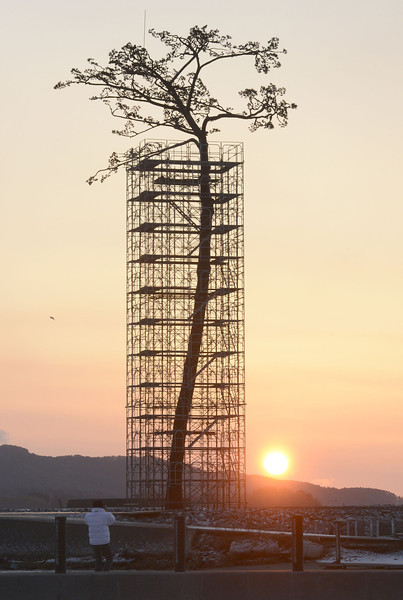
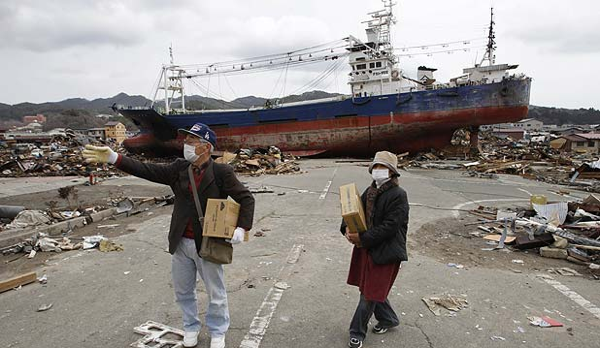
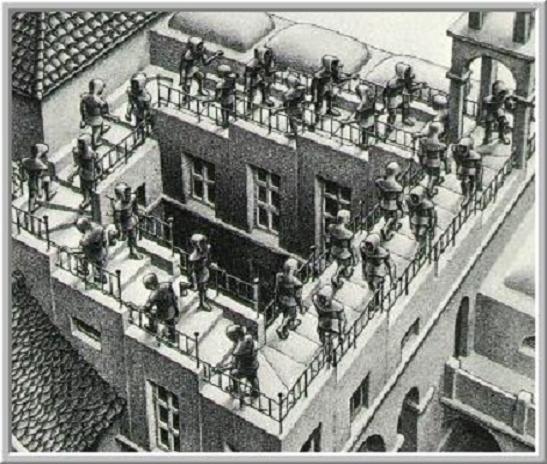
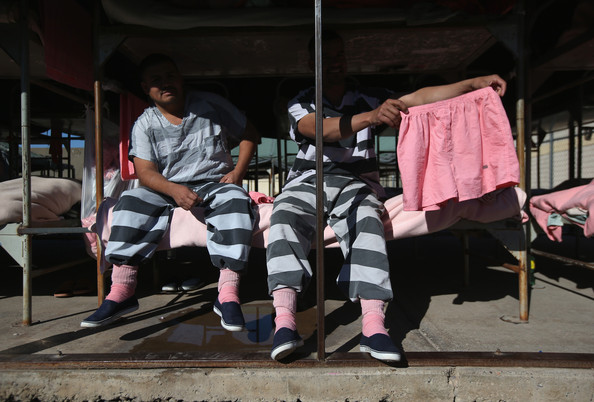
Reactions
Comments Powered by Disqus